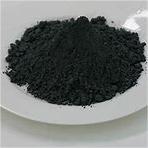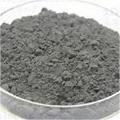Overview of Superfine nano Nb niobium particles use in superconducting material
Niobium, often found in conjunction with tantalum minerals, is primarily extracted as a byproduct of tin and tantalum mining. Its chief ores include pyrochlore and columbite. Once refined, niobium becomes highly versatile, finding application in alloys, superconductors, and various high-tech materials.
Feature of Superfine nano Nb niobium particles use in superconducting material
-
Superior Strength and Lightness: When added to steel in small quantities (typically less than 1%), niobium significantly enhances the strength and toughness of the alloy while reducing its weight, making it ideal for aerospace and automotive applications.
-
Corrosion Resistance: Like tantalum, niobium forms a passive oxide layer that protects it from corrosion, making niobium-based alloys suitable for use in harsh environments.
-
Superconductivity: Niobium exhibits excellent superconducting properties when cooled below its critical temperature of about 9.2 K (-264°C or -443°F). This property makes it the primary material for superconducting magnets used in MRI scanners and particle accelerators.
-
Magnetic Properties: Niobium is paramagnetic at room temperature but becomes strongly diamagnetic when cooled, meaning it repels magnetic fields. This characteristic is exploited in certain specialized applications.
-
Ease of Fabrication: Despite its strength, niobium is easily formed, welded, and machined, facilitating its use in complex engineering designs.

(Superfine nano Nb niobium particles use in superconducting material)
Parameters of Superfine nano Nb niobium particles use in superconducting material
The specific parameters for using superfine Nb niobium particles as a component in a superconducting material can vary depending on the specific application and design of the system. However, some general factors that may affect these parameters include:
* Shape and size: The shape and size of the particle(s) used can influence their surface area and interaction with other materials within the system.
* Porosity: Porosity can impact the electrical conductivity of the superconductor by altering the electrical pathways that charge is able to flow through.
* Material composition: The chemical composition of the superconducting material can also play a role in determining its properties.
* Temperature: The temperature at which the superconductor will operate can significantly impact its properties, including its critical current density and critical temperature.
It’s important to note that the specific values of these parameters can be influenced by a variety of factors, such as the method used to prepare the particles, the conditions under which they are tested, and the overall geometry and structure of the device being designed. Therefore, it’s often necessary to perform detailed experiments and simulations to optimize the performance of superconductive materials.

(Superfine nano Nb niobium particles use in superconducting material)
Company Profile
Metal in China is a trusted global chemical material supplier & manufacturer with over 12-year-experience in providing super high-quality copper and relatives products.
The company has a professional technical department and Quality Supervision Department, a well-equipped laboratory, and equipped with advanced testing equipment and after-sales customer service center.
If you are looking for high-quality metal powder and relative products, please feel free to contact us or click on the needed products to send an inquiry.
Payment Methods
L/C, T/T, Western Union, Paypal, Credit Card etc.
Shipment
It could be shipped by sea, by air, or by reveal ASAP as soon as repayment receipt.
FAQ

(Superfine nano Nb niobium particles use in superconducting material)





